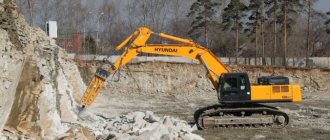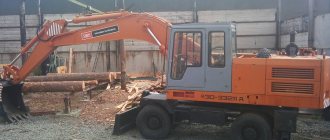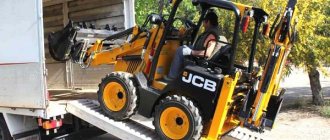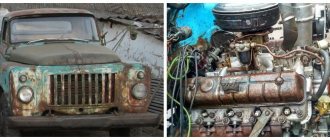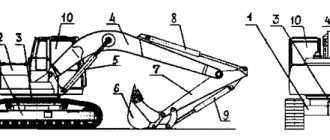Among construction equipment, excavators and loaders are the most popular, as their scope of application is regularly expanding. A big advantage is the ability to install additional attachments. In itself, this technique has a narrow focus of use, but due to the possibility of installing additional elements, it becomes multifunctional. The most popular attachment is the hydraulic hammer.
A hydraulic hammer is a replaceable equipment used on hydraulic excavators and hydraulic machines. Sometimes it is sold as additional spare parts for special equipment and then it comes immediately complete with a construction machine. Designed to work with dense natural rocks and metals. Can be used as auxiliary equipment when dismantling frozen soil.
Scope of application of an excavator-based hydraulic hammer
An excavator-based hydraulic hammer is a very convenient and useful technique with which you can perform many heavy types of construction work, most of them dismantling, such as:
- Excavation of problem areas - rocky, frozen or hard soils.
- Dismantling road surfaces made of asphalt, concrete or slabs, removing curbs.
- Elimination of old buildings and structures unsuitable for use, including destruction of foundations.
- Dismantling through breaking up unnecessary structures - monolithic and reinforced concrete.
- Excavation of rocks and quarries.
Excavator-based hydraulic hammer
The hydraulic hammer can also be used for installation, such as:
- Compacting soils for construction.
- Deepening piles when preparing the foundation.
A hammer is an impact-type attachment, the installation of which is available not only on heavy excavators, but also on tractors and loaders. Using a hammer, you can prepare the ground for bucket manipulation, laying communications, demolishing unnecessary structures, and clearing the territory. Without this impact tool, construction in winter would be impossible, since laying a foundation in frozen soil using only a bucket on an excavator is an impossible task.
In those times
The period from 2005 to 2007 saw the largest number of publications about equipment types and manufacturer advantages. And as a result, the choice at that time was made more or less meaningfully. The market was booming, and it was possible to experiment with new unknown brands and try out the principles of the rake. In the end, everything fell into place and the leading manufacturers were identified. Buyers themselves could give a lecture about hydraulic hammers, dispute the most compelling arguments, confirming their words with calculations and formulas. People educated themselves, and this benefited everyone.
Almost immediately, a group of professional equipment emerged; it included Hammer under the names Rammer/ Roxon/ Volvo/ Caterpillar/ Case/ Kubota/ JCB/ Sandvik (these are the same hydraulic hammers) and Atlas Copco (Krupp). Rare Montabert models were imported with used equipment. A group of semi-professional construction equipment has appeared. It included Delta, Daemo, Profbreaker, Soosan and other Korean brands.
A class of construction equipment has also appeared, not reaching professional level, but with above-average quality. This class was promoted with equipment sales, was significantly more expensive and in most cases was imposed on the client along with the excavator. The bright stars were Furukawa, NPK (Japan). Semi-professional hydraulic hammers from Indeco (Italy) stood apart, forming a pseudo-premium segment with the Japanese. Chinese manufacturers were just learning how to make copies of copies, so their influence was not felt.
Hydraulic hammer device
A hydraulic hammer is installed on an excavator instead of a bucket. This can easily be done by an excavator operator himself. The hammer itself consists of the following parts:
Hydraulic hammer device
- work item;
- lower, upper and guide bushings;
- finger and grease fitting;
- lower body;
- the cylinder itself and its cover;
- breather;
- hydraulic distributor;
- striker;
- seal block;
- filling device;
- coupling bolt.
The internal structure of the hydraulic hammer can be divided into three main working blocks:
- Impact element (peaks) - the shape depends on the purpose, it can be in the form of a spatula, rammer, wedge (chisel), cone and pencil.
- Piston unit - by means of fluid pressure, the firing pin is launched, which, when moving, transfers energy to the impact element.
- Nitrogen chamber - absorbs the reverse stroke of the striker, has a valve to regulate the pressure and amount of gas.
Hammer operating principle:
- The hydraulic distributor sets the fluid pressure, which transmits the impulse to the striker.
- The firing pin (piston) begins to move up and down, striking the working tool and transferring energy to it.
The hydraulic hammer can operate in automatic mode (no compressor unit is required), but for this it is necessary to additionally install a pneumatic distributor valve.
Boyhood
Initially, all hydraulic hammers had this design. The industry pioneers were Krupp, Roxon and Montabert. By country, respectively: Germany, Finland and France. Quickly, within four years, Soviet scientists caught up with them. VNII "Stroydormash" and six other specialized research institutes became the fourth global development center. All this happened in the late 1960s and early 70s. The post-war European economy developed at an unprecedented pace, new products quickly took root and became widespread in road construction and the mining industry.
Technical parameters of the hydraulic hammer
The range of excavator-based hydraulic hammers is huge. They differ from each other in technical characteristics that affect their suitability for carrying out certain work, productivity and quality of execution.
Main characteristics:
- The weight of the equipment and the machine on which it can be used is a hammer from 97 to 7100 kg, and transport - from 1 to 120 tons.
- Working pressure – from 80 bar (8 MPa) to 210 bar (21 MPa).
- Length (height) – from 1 to 5 meters.
- Beat frequency – from 250–400 to 600–1200 beats per minute.
- Impact energy – from 400 to 16740 J.
- Oil consumption – from 20–30 to 360–450 liters per minute.
- Diameter / length of the lance – from 46 to 210 mm / from 30 to 1011 mm.
Technical characteristics of hydraulic hammers
An excavator with a hydraulic hammer can be tracked or wheeled.
Among the advantages of wheeled equipment, the main one is its mobility - delivery of equipment to an object of any remoteness is not difficult. Otherwise, the delivery of the tool is carried out by means of a trawl. The disadvantage is instability.
Tracked special equipment is more stable, which means it can be used as a basis for a heavier hammer. And thanks to the rotating platform, it can work even in cramped conditions. The disadvantage is the difficulty of transportation to a new facility.
First bike
Let's start with the basics - types of hydraulic hammers: membrane and piston. These are not technical terms, but rather everyday names, but they hide the main difference in design and capabilities.
Since childhood, we involuntarily learn the principles of many physical phenomena, encountering them in everyday life. We do not attach importance to this if we do not subsequently address these effects in work or study. What from our childhood so clearly illustrates the work of a hydraulic hammer, because this article is about it?
The most commonplace thing, and you could hardly think about it, is a bicycle. More precisely, not the bicycle itself, but the pump from the bicycle. Some will say they don't remember this. But no matter what you say, every child learned how to operate a pump even before they learned to ride on their own. Just do an experiment now: invite ten children and put pumps in front of them - nine pumps will be in their hands, the tenth will already be disassembled.
Everyone remembers that if you close the air hole, the pump springs under compression. This is how we get acquainted with the gas spring. Later at school we learn about the compressibility of gases, study inert gases, etc., but the very first experience comes from distant childhood. Therefore, when training new employees, this accessory is often used. Squeeze the closed pump and release it, it shoots back under the influence of the gas spring. Here is the simplest demonstration of the principle of operation of a hydraulic hammer - from simple to complex.
Choosing a hydraulic hammer for an excavator
In order to complete the required work efficiently, on time, with minimal effort and money, it is important to choose the right hydraulic hammer for an excavator.
When making a choice, it is important to consider the following criteria:
Compatibility of hydraulic hammers with excavators
- Compatibility of the tool and transport - hydraulic system and technical characteristics (fluid flow, pressure level).
- Comparability of the weight of the hammer and equipment - the hammer should weigh no more than 10% of the total weight of the excavator.
- Features of the work (complexity, volume) - it is important to take into account the force and frequency of the impact (the greater they are, the higher the power and productivity).
- Territorial features of the object - when working in limited space or depth, it is important to take into account the dimensions of the equipment and the reach of the boom.
If you need to dismantle a coating that is not too durable, then lightweight equipment models are suitable. But if the volume of planned work is very large, then it will be much more effective to use a hammer with greater impact force.
Related video: Impulse 500S hydraulic hammer
Publications on the topic
List of offers for renting a hydraulic hammer in Ufa
Hydraulic hammer services in Rostov-on-Don - special equipment rental companies
Hydraulic hammer rental from Khabarovsk companies
Our days
On business trips to various regions of Russia one has to observe a sad picture. Once again we are returning to where we started ten years ago. Semi-professional construction hydraulic hammers and manipulators not intended for heavy loads have poured into quarries under plausible pretexts. Lack of experience and knowledge among buyers, exposure to cheapness, and gullibility create the basis for critical errors in choosing equipment for critical work. And it cannot be said that these models are bad in the construction segment - they are good for their class. But this equipment is not for mining, not for mining. And who will be the last one if the wrong equipment is purchased? The answer is simple - a supplier. Their work is so risky. That’s why they change often; few people stay in this position for more than ten years. Naturally, a generation of experienced buyers has changed, and again we have to return to descriptions of the operating principle of a hydraulic hammer, the main differences, advantages and disadvantages. Again, it is necessary to disclose aspects and distinctive features of types and models to buyers and suppliers, so as not to meet new employees every time. For us, suppliers and manufacturers, this is at least inconvenient.
Family stories
What happened to the founders was a series of bankruptcies and acquisitions. Thus, Krupp was purchased by Atlas Copco. Roxon began to bear the name Rammer and became part of Sandvik, lost its name during the takeover, returned to the market under the Hammer brand, and subsequently regained the old name Rammer. Montabert searched for shelter for a long time, changed several owners and found temporary peace in Doosan for the time being. Soviet developments were stopped in the 1990s. and were embodied in the new project “Impulse” under the auspices of the technology park of the same name and the Impulse brand in the early 2000s.
Family album
Remember that the founders and centers of research activity were Krupp, Rammer, Montabert and the Stroydormash Research Institute. But today there are more than three hundred manufacturers of hydraulic hammers. Has everything really become accessible, and now every company can set up production?
Of course not. A hydraulic hammer belongs to the category of the most complex products, the closest to which is the internal combustion engine. Are there many people in the world who produce engines? No, because there are decades of development behind this, and the same amount of time is needed for technical implementation. It's long, expensive and difficult.
The history of the development of hydraulic hammers has its sad and even stupid pages. The German company Krupp became the “donor” of mass production. In the mid-70s, having transferred the license for an obsolete model to the Japanese company Furukawa, the Germans could not even think that they were thereby opening Pandora's box. The Japanese Furukawa, in turn, gives the license to the Korean Soosan, and a new time begins - a time of nightmare for developers, a period of copying, counterfeiting, and theft. Technology and documentation are sold in large quantities throughout Korea and China.
Most hydraulic hammers on the market today are copies of the same old “Krupp” model. Slightly modified and redesigned, but still the same old German hammer. Only the materials are not the same, the processing accuracy is not original, the resource differs by an order of magnitude.
What is it used for?
Pneumatic, electric or gasoline concrete breakers are used to dismantle durable building structures. The device can also split rocks.
Builders use it if the task is to dismantle building foundations, reinforced concrete columns, bridge structures and other high-strength concrete building structures.
How a concrete breaker works - video
Rescuers often use a concrete breaker because the dismantling speed is high. And often it becomes the decisive factor in saving people in emergency situations.
